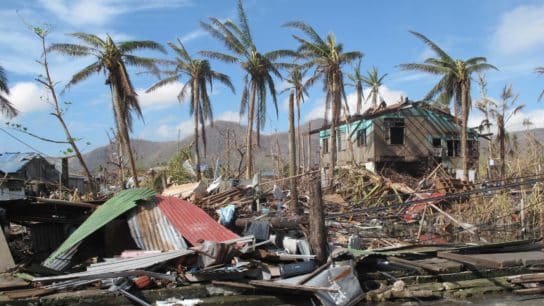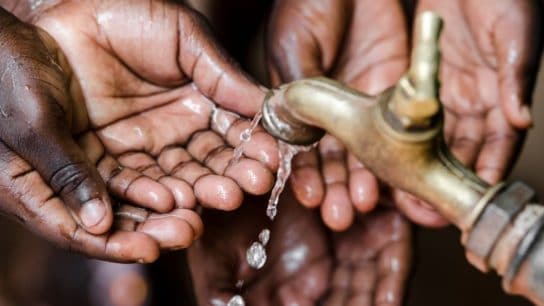Some 35 million people lived in internal displacement in Africa at the end of 2023 as a result of conflict and climate disasters, a threefold increase since 2009.
—
Climate-related disasters such as droughts and floods are driving increasing displacement across the African content, with the number of internally displaced people now six times higher than 15 years ago, a new report has found.
According to data compiled by the Internal Displacement Monitoring Centre (IDMC), floods accounted for more than three-quarters of all disaster-related displacements – which last year reached 6.3 million. In 2009, the number of people internally displaced by a disaster was 1.1 million.
Western and eastern Africa were particularly affected by floods, mostly during the rainy season.
In 2022, deadly floods in Nigeria forced 2 million people were forced to flee their homes. An attribution study later confirmed that climate change made the event 80 times more likely to occur and approximately 20% more intense.
Last year, Tropical Cyclone Freddy triggered 1.4 million internal displacements across six countries and territories in south-eastern Africa but mostly in Madagascar, Malawi and Mozambique. It was the longest-lasting tropical cyclone on record, lasting 36 days.
According to the Intergovernmental Panel on Climate Change (IPCC), climate change is intensifying the water cycle, leading to more intense rainfall and associated flooding. As the world continues to warm, the likelihood, frequency, and intensity of such events are only expected to increase further.
IDMC also concluded that droughts have accounted for 11% of all disaster displacements in the continent in the last 15 years.
Drought displacement data only became available in 2017. Despite significant improvements since then, gaps persist, with data still limited to a handful of countries, the center said.
At least 1.84 billion people – nearly one in four people worldwide – across five continents experienced drought conditions in 2022 and 2023, according to the UN. If no action is taken, it is estimated that 700 million people will be at risk of being displaced by drought by 2030, and one in four children will live in areas with extreme water shortages by 2040.
By 2050, more than 75% of the world’s population will be affected by droughts with an estimated 4.8-5.7 billion living in areas that are water-scarce for at least one month each year.

Yet disasters trigger just a small fraction of all internal displacements in the continent.
Conflict remains the number one driver behind Africa’s 35 million internally displaced people, affecting nine out of 10 people.
Conflict displacements remain highly concentrated, with 80% happening in just five countries: Democratic Republic of the Congo, Ethiopia, Nigeria, Somalia and Sudan. The latter is suffering the world’s largest and most protracted internal displacement crisis, with some 9.1 million people living in displacement at the end of 2023.
Displacement rates have also risen sharply in Mozambique and border areas between Burkina Faso, Mali and Niger, where new conflicts have broken out.
Conflict-related displacements have risen three-fold since 2009, when the African Union adopted a landmark treaty to address the phenomenon.
To date, the Kampala Convention is still the only legally binding regional instrument addressing all causes and phases of internal displacement. 34 countries have ratified the treaty and subsequently made significant investments in establishing national data systems to inform legal and policy frameworks.
Many displacement-specific instruments also increasingly recognize disasters and climate change as significant triggers alongside conflict and violence, and many countries’ climate adaptation strategies take displacement into account, the center said.
But rising conflicts, coupled with escalating climate-related disasters, have added to an already precarious situation in recent years, increasing communities’ vulnerabilities and preventing governments from keeping the situation under control.
Alexandra Bilak, IDMC director, described the situation as “absolutely critical, but not hopeless,” highlighting “many good examples” of governments actively working to address the root causes of displacement.
“It’s important for them to keep ownership of this issue and the international community to support their efforts,” Bilak said. “It’s not too late to help those whose lives have been upended when they were forced to flee their homes, but there is no time to lose. Helping them find solutions to their displacement is part and parcel of reaching a country’s development goals.”
This story is funded by readers like you
Our non-profit newsroom provides climate coverage free of charge and advertising. Your one-off or monthly donations play a crucial role in supporting our operations, expanding our reach, and maintaining our editorial independence.
About EO | Mission Statement | Impact & Reach | Write for us














